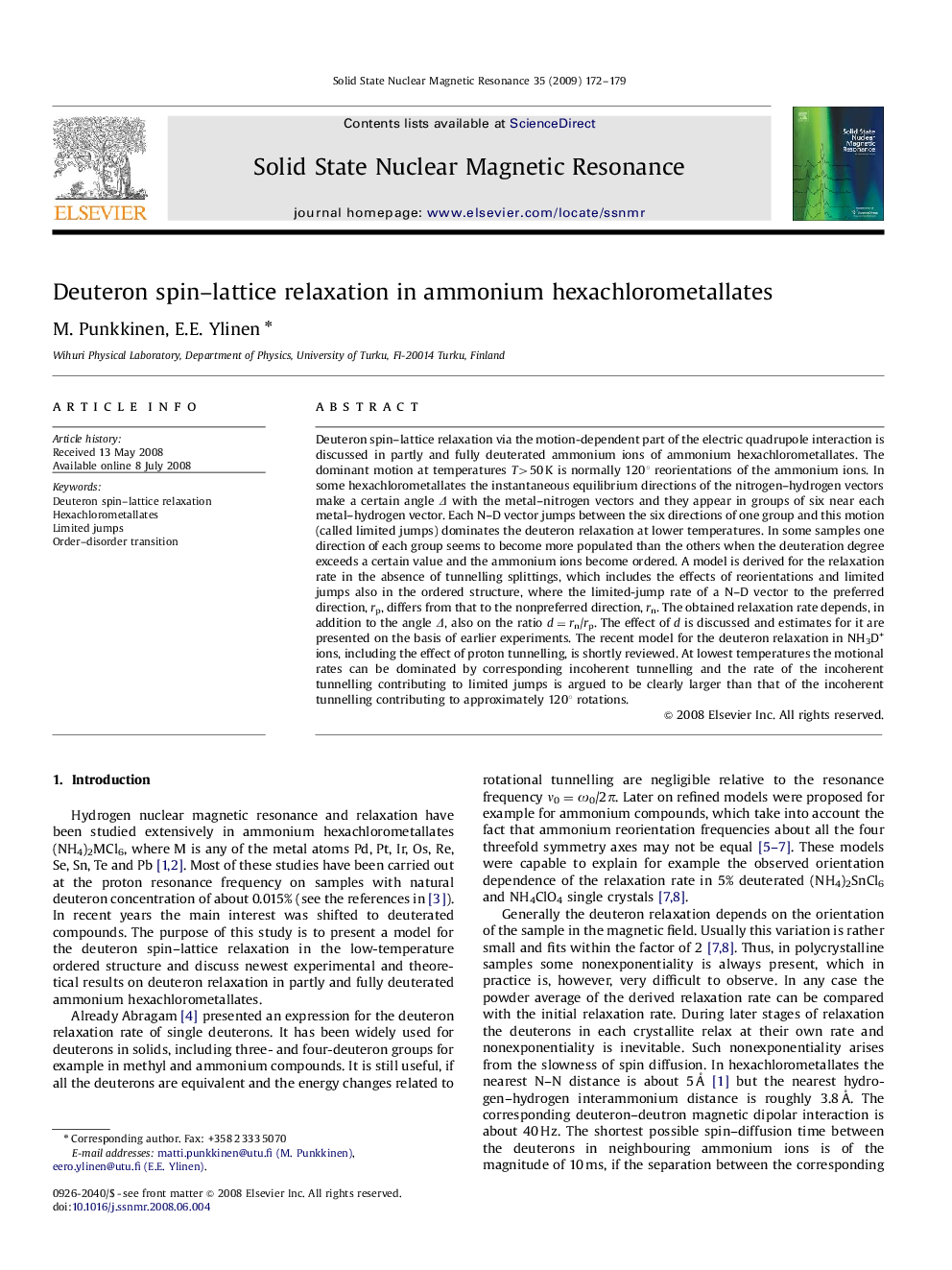| Article ID | Journal | Published Year | Pages | File Type |
|---|---|---|---|---|
| 5420628 | Solid State Nuclear Magnetic Resonance | 2009 | 8 Pages |
Abstract
Deuteron spin-lattice relaxation via the motion-dependent part of the electric quadrupole interaction is discussed in partly and fully deuterated ammonium ions of ammonium hexachlorometallates. The dominant motion at temperatures T>50 K is normally 120° reorientations of the ammonium ions. In some hexachlorometallates the instantaneous equilibrium directions of the nitrogen-hydrogen vectors make a certain angle Î with the metal-nitrogen vectors and they appear in groups of six near each metal-hydrogen vector. Each N-D vector jumps between the six directions of one group and this motion (called limited jumps) dominates the deuteron relaxation at lower temperatures. In some samples one direction of each group seems to become more populated than the others when the deuteration degree exceeds a certain value and the ammonium ions become ordered. A model is derived for the relaxation rate in the absence of tunnelling splittings, which includes the effects of reorientations and limited jumps also in the ordered structure, where the limited-jump rate of a N-D vector to the preferred direction, rp, differs from that to the nonpreferred direction, rn. The obtained relaxation rate depends, in addition to the angle Î, also on the ratio d=rn/rp. The effect of d is discussed and estimates for it are presented on the basis of earlier experiments. The recent model for the deuteron relaxation in NH3D+ ions, including the effect of proton tunnelling, is shortly reviewed. At lowest temperatures the motional rates can be dominated by corresponding incoherent tunnelling and the rate of the incoherent tunnelling contributing to limited jumps is argued to be clearly larger than that of the incoherent tunnelling contributing to approximately 120° rotations.
Keywords
Related Topics
Physical Sciences and Engineering
Chemistry
Physical and Theoretical Chemistry
Authors
M. Punkkinen, E.E. Ylinen,
